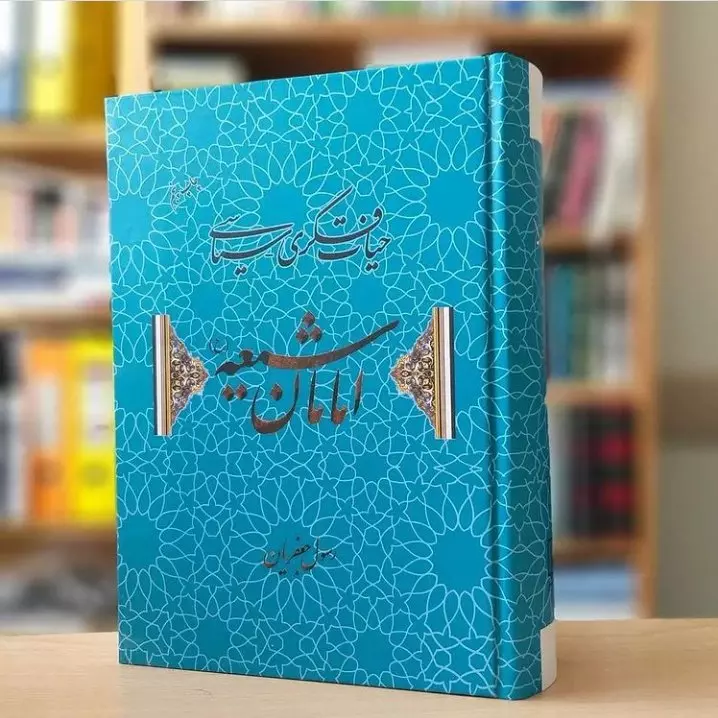There have been many books on the lives of the Shii Infallible Imams. There are certain features that make the present book a distinguished work. In the first place, Jaʽfarīyān is a knowledgeable and prolific author. Secondly, the book does not divide this long history in several chunks or bits. Rather the whole history of the Infallible Imams is rendered consequently. A second merit of the book is that it is concentration is on the sources and intellectual currents produced.
According to the book, the lessons and chapters included in it had previously been published as excerpts of longer texts in certain Iranian periodicals and research-level journals. Hence the present book is a revised and updated version of the same journal articles.
 The book has got thirteen chapters. The first one is a rather theoretical introduction to the materials covered in the book. In the introduction, it talks of the following topics: Shiism and historiography, Shii historiography in the earliest period of recording history, Shii works on the conducts of the Prophet Muhammad in the earliest periods of Shii historiography, Shii books of the accounts of other, pre-Islamic prophets, Shii books of convincing arguments (dalāʼil) from the 4th-6th/ 10th-12th centuries, theological/ hadith/ rijāl-history books, the histories of the 12 Infallible Imams from the 5th-7th/ 11th-13th centuries, local histories from the 4th-8th/ 10th-14th centuries, Persian and Arabic works of Twelver Sunnis, Persian works of Twelver Shiis from the 7th-10th/ 13th-16th centuries, historiography at the dawn of the Safavid period, maqtal-writing during the Safavid and Qajar periods, changes in contemporary historiography, and some modern works on the fourteen Infallibles.
The book has got thirteen chapters. The first one is a rather theoretical introduction to the materials covered in the book. In the introduction, it talks of the following topics: Shiism and historiography, Shii historiography in the earliest period of recording history, Shii works on the conducts of the Prophet Muhammad in the earliest periods of Shii historiography, Shii books of the accounts of other, pre-Islamic prophets, Shii books of convincing arguments (dalāʼil) from the 4th-6th/ 10th-12th centuries, theological/ hadith/ rijāl-history books, the histories of the 12 Infallible Imams from the 5th-7th/ 11th-13th centuries, local histories from the 4th-8th/ 10th-14th centuries, Persian and Arabic works of Twelver Sunnis, Persian works of Twelver Shiis from the 7th-10th/ 13th-16th centuries, historiography at the dawn of the Safavid period, maqtal-writing during the Safavid and Qajar periods, changes in contemporary historiography, and some modern works on the fourteen Infallibles.
From now on, every chapter deals with an Infallible Imam. In this way, the second chapter deals with Imam ʽAlī. This chapter in 71 pages deals with the life of Imam ʽAlī from his birth and moves to his crucial roles in the time of the Prophet. As expected, the chapter deals with the critical periods of his time and finally deals with his martyrdom. As Shiis firmly believe in his imamate, the concepts of imamate are discussed in the same chapter.
From the lives of the Infallible Imams, the life of Imam al-Ḥusayn is discussed more extensively. In this 81-page chapter, the political standpoints are more salient. This is because the Umayyad tyrant ruler was utterly disqualified for such a high responsibility. In this chapter, it is asserted that Imam al-Ḥusayn was certainly aware of his martyrdom fate, yet he had to take that martyrdom-oriented journey to fulfill his unique responsibility and mission. This chapter also deals with other interpretations of the Ashura Battle of Karbala and the multi-faceted personality of Imam al-Ḥusayn.
The lives of the next Infallible Imams, namely the fourth Infallible Imam ʽAlī b. al-Ḥusayn “al-Sajjād”, the fifth Infallible Imam Muḥammad al-Bāqir, and the sixth Infallible Imam Jaʽfar al-Ṣādiq have more religio-cultural flavor, as they had to combat doctrinal deviations.
The lives of the other Infallible Imams are also colored by more concentration on their political aspects. For example, of the life of the eighth Infallible Imam ʽAlī b. Mūsā “al-Riḍā”, Maʼmūn’s futile conspiracy as to selecting the Imam as his crown prince is discussed at length. The life and times of the tenth Infallible Imam ʽAlī al-Hādī is replete with his foresightedness of making a network of his deputies (wukalāʼ) in various regions for guiding the Shii populace of almost every region.
The final chapter deals with the life of the 12th Infallible Imam al-Mahdī. Here the two phases of his occultation are explained, particularly with reference to his four Baghdad-based delegates.
In addition to the historical information given, the book is a goldmine of passing commentaries on most of the books mentioned.
Muhammad-Reza Fakhr-Rohani
University of Qum,
Iran.
